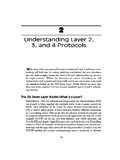Transcription of CHAPTER 1 : INTRODUCTION TO INTERNET - Weebly
1 BCA Sem. -1 | Networking & INTERNET Environment Prepared by : Nirzari Bhayani | Harivandana College, Rajkot CHAPTER 1 : INTRODUCTION TO INTERNET COMPUTER NETWORK A computer network is a group of computer systems and other computing hardware devices that are linked together through communication channels to facilitate communication and resource-sharing among a wide range of users. Networks are commonly categorized based on their characteristics. TYPE OF COMPUTER NETWORK LAN(Local Area Network) - A LAN connects network devices over a relatively short distance.
2 A networked office building, school, or home usually contains a single LAN, though sometimes one building will contain a few small LANs (perhaps one per room), and occasionally a LAN will span a group of nearby buildings. In TCP/IP networking, a LAN is often but not always implemented as a single IP subnet. In addition to operating in a limited space, LANs are also typically owned, controlled, and managed by a single person or organization. They also tend to use certain connectivity technologies, primarily Ethernet and Token Ring.
3 MAN(Metropolitan Area Network) - A network spanning a physical area larger than a LAN but smaller than a WAN, such as a city. A MAN is typically owned by an operated by a single entity such as a government body or large corporation. WAN(Wide Area Network) - As the term implies, a WAN spans a large physical distance. The INTERNET is the largest WAN, spanning the Earth. A WAN is a geographically-dispersed collection of LANs. A network device called a router connects LANs to a WAN. In IP networking, the router maintains both a LAN address and a WAN address.
4 NETWORK TOPOLOGY In computer networking, topology refers to the layout of connected devices. Network topologies are categorized into the following basic types: Bus, Ring, Star, Tree, Mesh More complex networks can be built as hybrids of two or more of the above basic topologies. Bus Topology - Bus networks use a common backbone to connect all devices. A single cable, the backbone functions as a shared communication medium that devices attach or tap into with an interface connector. A device wanting to communicate with another device on the network sends a broadcast message onto the wire that all other devices see, but only the intended recipient actually accepts and processes the message.
5 BCA Sem. -1 | Networking & INTERNET Environment Prepared by : Nirzari Bhayani | Harivandana College, Rajkot Ring Topology - In a ring network, every device has exactly two neighbors for communication purposes. All messages travel through a ring in the same direction (either "clockwise" or "counterclockwise"). A failure in any cable or device breaks the loop and can take down the entire network. Star Topology - Many home networks use the star topology. A star network features a central connection point called a "hub node" that may be a network hub, switch or router.
6 Devices typically connect to the hub with Unshielded Twisted Pair (UTP) Ethernet. Tree Topology - Tree topologies integrate multiple star topologies together onto a bus. In its simplest form, only hub devices connect directly to the tree bus, and each hub functions as the root of a tree of devices. This bus/star hybrid approach supports future expandability of the network much better than a bus (limited in the number of devices due to the broadcast traffic it generates) or a star (limited by the number of hub connection points) alone.
7 BCA Sem. -1 | Networking & INTERNET Environment Prepared by : Nirzari Bhayani | Harivandana College, Rajkot Mesh Topology - Mesh topologies involve the concept of routes. Unlike each of the previous topologies, messages sent on a mesh network can take any of several possible paths from source to destination. (Recall that even in a ring, although two cable paths exist, messages can only travel in one direction.) Some WANs, most notably the INTERNET , employ mesh routing. OSI REFERENCE model The OSI, or Open System Interconnection, model defines a networking framework to implement protocols in seven layers.
8 Control is passed from one layer to the next, starting at the application layer in one station, and proceeding to the bottom layer, over the channel to the next station and back up the hierarchy. There's really nothing to the OSI model . In fact, it's not even tangible. The OSI model doesn't do any functions in the networking process, It is a conceptual framework so we can better understand complex interactions that are happening. The OSI model takes the task of internetworking and divides that up into what is referred to as a vertical stack that consists of the following layers: BCA Sem.
9 -1 | Networking & INTERNET Environment Prepared by : Nirzari Bhayani | Harivandana College, Rajkot Open Systems Interconnection ( OSI ) is a standard reference model for communication between two end users in a network. The model is used in developing products and understanding networks. Layer 1: The physical layer ..This layer conveys the bit stream through the network at the electrical and mechanical level. It provides the hardware means of sending and receiving data on a carrier. Layer 2: The data-link layer ..This layer provides synchronization for the physical level and does bit-stuffing for strings of 1's in excess of 5.
10 It furnishes transmission protocol knowledge and management. At this layer, data packets are encoded and decoded into bits. It furnishes transmission protocol knowledge and management and handles errors in the physical layer, flow control and frame synchronization. The data link layer is divided into two sub layers: The Media Access Control (MAC) layer and the Logical Link Control (LLC) layer. The MAC sub layer controls how a computer on the network gains access to the data and permission to transmit it. The LLC layer controls frame synchronization, flow control and error checking.

